
Sony have today launched their latest XDCAM professional camcorder. The PXW-Z150 is an all-in-one 4K camera with fixed zoom lens, on the outside looking a lot like a 4K version of the recent NX100 HD camcorder. The sensor is 1-inch and coupled to a 12x optical zoom. It records up to 30P 4K in the professional XAVC Long format at a maximum of 100Mbps (as opposed to XAVC S, used by the a7S). It can also record Full HD in XAVC Long 4:2:2 10-bit at 50Mbps, plus legacy MPEG2HD at 50Mbps and 35Mbps. Slow motion HD shooting at 120 fps is in there too, but not the lower resolution 960fps option of the RX10 II. There are dual SD card slots for recording.
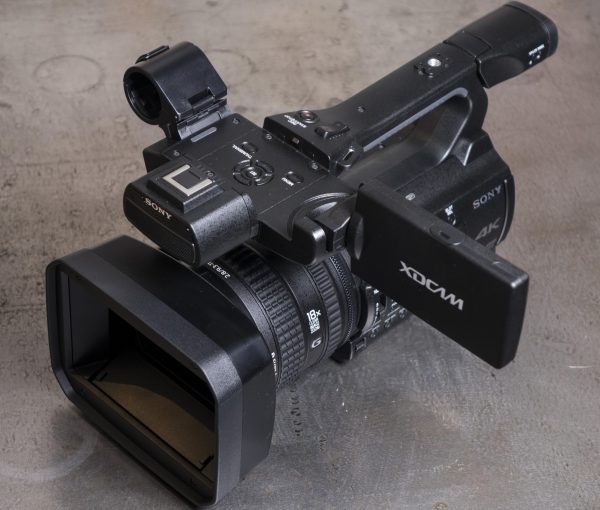
There is a built-in 1440K dot OLED electronic viewfinder (EVF) at the rear which is pretty much the same as the one from the FS5, not the higher resolution T* optics type found on the a7S II. There is also a 3.5 inch 1550K dot flip-out screen.
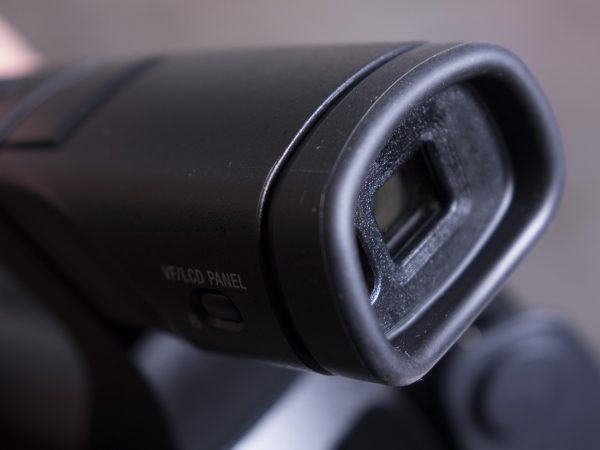
There are several picture profiles to choose from, cinema tone being the closest to Cine gammas from the FS5 and FS7. There is one conspicuous absence, though: the camera has no S-Log mode, even though the cheaper RX100 mkIV, RX10 II, a7S II, a7R II and a6300 have the feature.
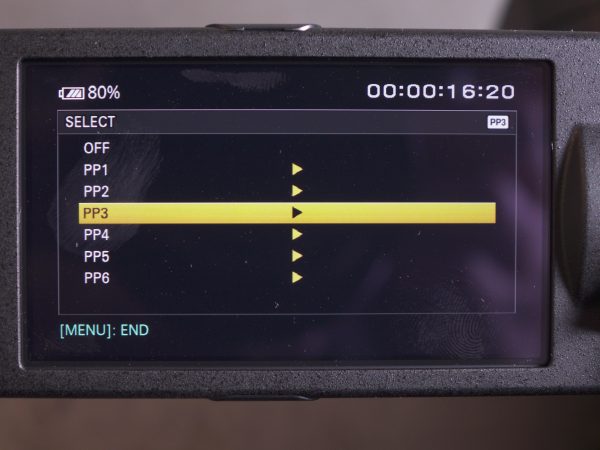
The lens is a 29-348mm (equivalent) with the option to attach a bayonet type VCL HG-0872K wide angle adapter, much like the old EX1. The maximum aperture is f2.8-4. It would have been nice to see it as a constant aperture zoom instead. It has three separate rings for focus, iris and zoom which make manual operation easier, although focus is fly-by-wire and there is no distance scale on the lens itself. The camera has contrast detection autofocus and the ability to do face detection autofocus as well. This is standard for this kind of camcorder; just don’t expect the fast AF performance of Canon’s Dual Pixel CMOS AF.
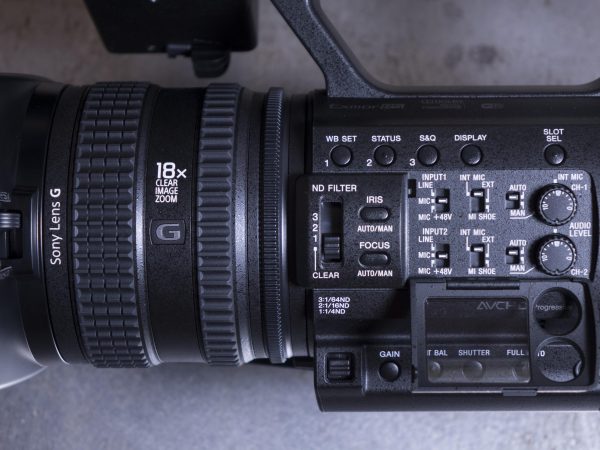
The lens can be zoomed via the dedicated ring, a rocker on the grip and another on the top handle. In addition there is a Lanc port on the rear which allows remote control with the right controller. There is also a Multi-Terminal USB port for control via some of Sony’s own remotes (and possibly third party start/stop grips as well). There is a HDSDI output and also a 4K capable HDMI output. These should make the camera suitable for use in live productions.
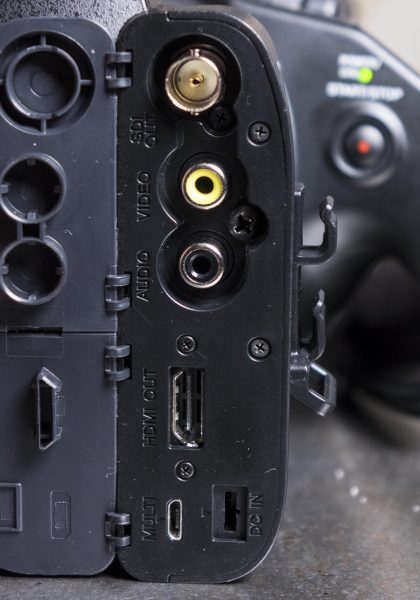
There is XLR audio and the all important built-in ND filters to round off the spec. The whole camera is about the same size as the famous Sony Z1 DV camera of yesteryear.
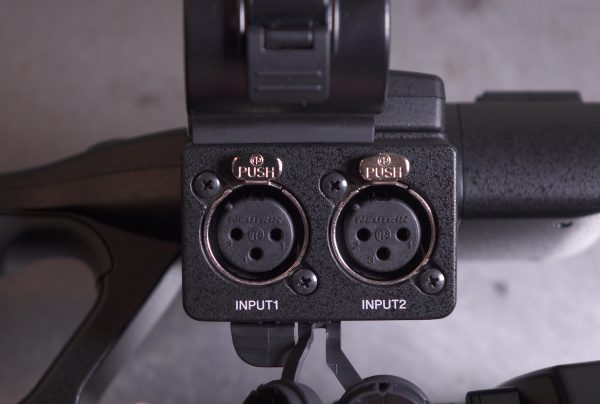
Sony are pitching this camera at event shooters, students and corporate filmmakers who want a simple to operate yet versatile camera. Because of this, many of the controls are simplified and there are not as many menu options as on some other Sonys.
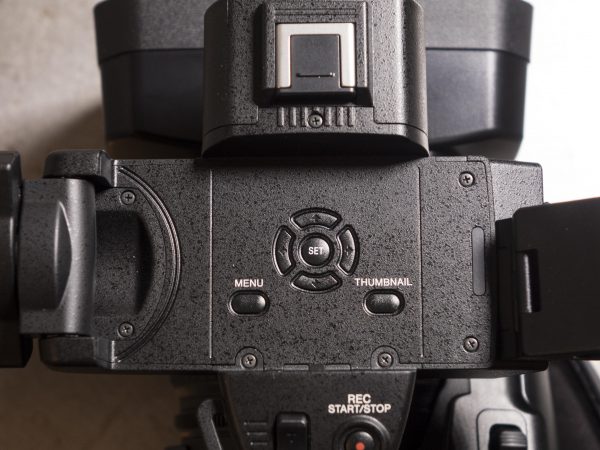
The company see it placed between their smaller 1-inch cameras like the RX10 II and PXW-X70, and the large sensor FS5 and FS7. For these markets this camera might be exactly what users need.
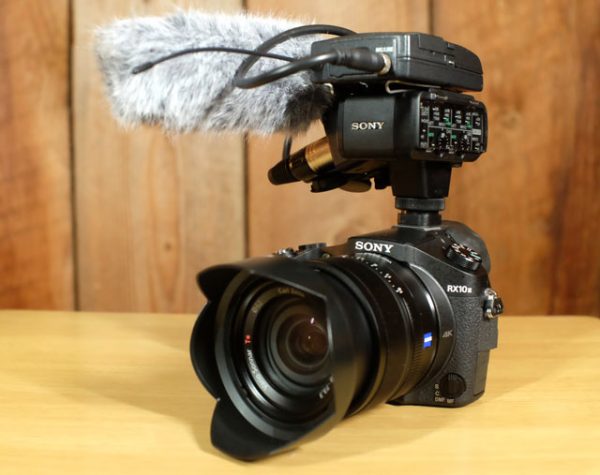
For a long time Super16 film was the TV documentary format of choice. This was for good reason. The smaller size image allows for longer zoom ranges and fast lens apertures, while at the same time keeping lenses and cameras reasonably small. The depth of field may not be as shallow as 35mm, but it is shallower than that of 2/3inch ENG camera sensors. Lastly, the Super16mm film was easier to transport than 35mm and you could film for longer on assignment.
Until recently there was little choice if you wanted to achieve a similar setup using digital. Documentary shooters had to choose between video DSLRs and digital cinema cameras with large sensors, or smaller 2/3, 1/2 and 1/3 inch handycam types.
Nowadays there are more choices of cameras with sensor sizes in-between Super35 and 2/3 inch. Micro 4/3 cameras like the Panasonic GH4, Blackmagic Pocket Cinema Camera and JVC GY-LS300 are all great options. Sony themselves also have several options for owners of older Super16 lenses – the HD Center Scan mode equipped FS5, FS7 and F5/55, plus the 4K a7R II with Clear Image Zoom engaged are all good choices. However, all of these cameras need you to add a lens, and finding one with a good range and manual control can be pricey and difficult.
At Newsshooter quite a few of us own and use the little Sony RX10 and RX10 mkII cameras. These are great little cameras with good image quality, but they are hard to control due to the small form factor and lack of real manual controls. The PXW-X70 has better form factor, but is still not as controllable as the PXW-Z150.
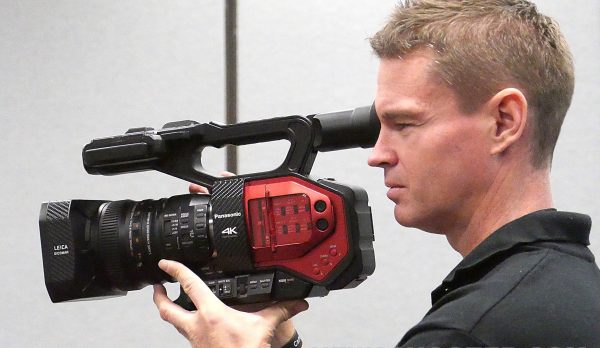
The one camera that has really tried to fill this gap is the Panasonic DVX200. With full 4K and a 4/3 sensor, manual controls, XLRs, ND and a decent built-in 13x zoom, it is currently the all-in-one doc camera to beat – and all for the price of $4195 US.
So could the PXW-Z150 displace the DVX200 as the dream all-in-one documentary camera? Compared to the Panasonic with its V-Log L, the PXW-Z150 lacks any form of Log picture profile. The DVX200 has 4K at 60P, while the Sony maxes out at 4K 30P. The DVX200 has a slightly wider (13x) zoom range, but neither camera has a particularly fast aperture lens and neither is a low light king as a result. If you want that you would be better off with an a7S II or C100. Neither the DVX200, nor the PXW-Z150 has a mechanical manual focus ring either.
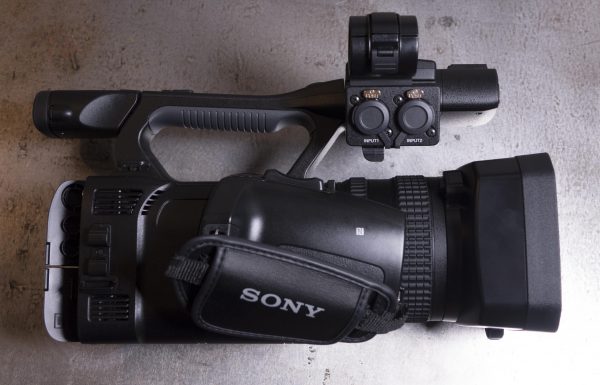
The DVX200 has a fuller feature set and a larger sensor. The PXW-Z150 has a lower suggested retail price. If you’re on a moderate budget, don’t need Log gamma, and want an all-in one camera with a conventional design, then the PXW-Z150 is certainly worth a look.
To find out more about the camera you can visit the Sony website.





